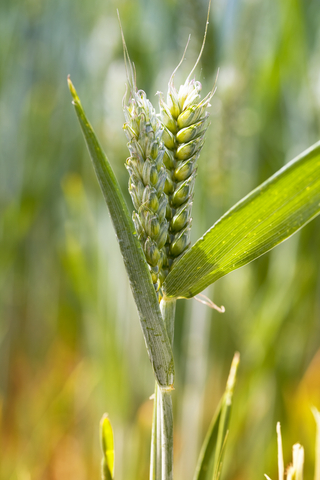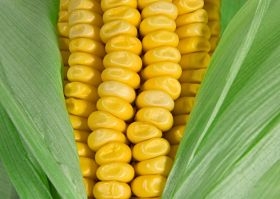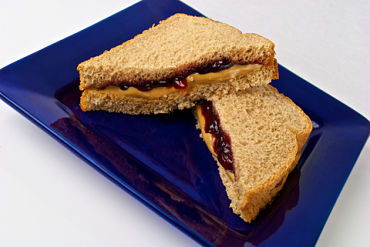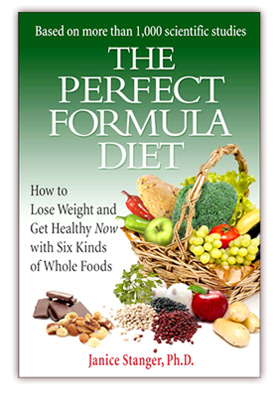
Whole grains are lovely as they grow. You can clearly see in this picture that the grains of wheat are seeds that form in a cluster on a grassy plant.
A Seed by Any Other Name is Still a Seed
Real world studies of what people eat show, over and over again, that if you consume whole grains you will be healthier and thinner. Yet outlandish statements in the popular media, and even “nutrition” books, may keep you from enjoying and benefitting from these most basic of all foods. When you know the facts, you won’t deprive yourself.
Whole grains are seeds. You might hear silly statements such as “Whole grains are not healthy, but quinoa is because it’s a seed.” If you hear anything like this, you know whoever is telling you knows zero about plants or nutrition, and you can boost your health by tuning out.
Another mundane myth is that people did not start to eat whole grains until these plants were domesticated about 10,000 years ago. Why would people have gone to all the trouble of deliberately cultivating a plant that they never ate before? Were our ancestors that misguided? The truth is that people ate wild grain seeds long before they started to plant them. In some parts of the world, wild grains still mingle with the domesticated in the fields.
In contrast to refined grains that dominate profitable food industry products, whole grain foods contain all parts of the seed. These include the outer protective skin (bran), tiny baby plant ready to sprout (the germ), and food to nourish the baby plant until it can produce its own (endosperm). Refined grain foods are generally made only from the
endosperm. Choosing a refined grain product over its whole grain equivalent is like turning away a $100 bill in favor of a $1. Why would you do this?
The health benefits of whole grains are undeniable, which does not stop competing interests, which would rather see you eat meat and dairy, from denying them. Decades of research on hundreds of thousands of people show consistent findings. For example, one study pulled together the results of 67 other studies published between 1966 and 2012. The researchers found that people who ate 3 to 5 servings of whole grains each day had a 26% lower risk of type 2 diabetes, a 21% lower risk of cardiovascular disease, and gained less weight as they got older. Eating whole grains lowered cholesterol and fasting blood sugar levels.
Other studies have discovered that whole grains may lower blood pressure and reduce the risk you’ll develop certain kinds of digestive, hormonal, and other cancers.
Lots of good things in whole grains lead to such impressive health benefits. Like other whole plant foods, whole grains are crammed with vitamins, minerals, and phytochemicals (beneficial nutrients found only in plants). The fiber found in whole grains supports healthy bacteria in your digestive tract, helping keep dangerous bacteria in check. This fiber also helps keep you full and satisfied, which is an important reason that whole grains help you stay thin. Whole grains contain optimal amounts of protein for you to thrive.
If you currently favor refined grains over whole – such as white rice instead of brown or white bread or bagels instead of whole wheat bread – you are in for a treat as you reeducate your taste buds. This generally takes about 3 weeks until you start preferring the heartier taste and texture of whole grains. Or you can gradually mix whole and refined grains together, upping the proportion of whole each time you do this for an even easier transition. If you really don’t like one brand after a 3 week try, look for another. Food makers are delivering more on the whole grain promise for savvy consumers.
Some prepared foods that promise “whole grain” on their labels are actually mostly refined. You need to check the ingredient list. Some type of whole grain (labeled clearly as “whole”) should be near the beginning of the list. Wheat flour and unbleached wheat flour are not whole. You need to be especially careful in choosing bread and breakfast cereals, but make sure you read through all labels until you know which choices are best.
Whole grains are seeds, but not all seeds are whole grains. To be more specific, whole grains – also called cereals – are the seeds of certain grasses. These seeds store their energy mostly as complex carbohydrates instead of fat. Whole grains include wheat, corn, rice, barley, oats,
millet, and rye.
Quinoa, buckwheat, and amaranth are “pseudocereals” that are quite similar nutritionally to whole grains but are produced by plants that are not grasses. You can freely mix and match pseudocereals and cereals in your diet, and they are combined in this article as whole grains. Beans and peas are also seeds, but are formed in a pod and have a different nutritional profile than whole grains do. Of course other seeds, such as flax, chia, sesame, pumpkin, and sunflower, store most of their energy as fats, so are definitely not to be substituted for whole grains in planning your diet.
Don’t let scare tactics by people who ignore the consistent science deprive you of the pleasure and benefit of whole grains. These foods are inexpensive, filling, nutritious, convenient, easy to cook, and healthful. Enjoy them throughout your day.
If you enjoyed this post, you may want to try some whole grain recipes to delight in these versatile, filling foods, or read more about the role of whole grains in weight loss.
Intrigued? Now you can use our Whole Foods Blog Finder to target informative, fun postings on whole foods, plant-based diets. Quick information at no cost!
Blog posting by Janice Stanger, Ph.D. Janice authored The Perfect Formula Diet: How to Lose Weight and Get Healthy Now With Six Kinds of Whole Foods. This easy-to-follow eating plan is built on a whole foods, plant-based diet that can prevent, and even reverse, most chronic disease. Janice enjoys whole grains in everything from simple bowls of these cooked seeds to world-class recipes.
Tags: barley, cardiovascular disease, corn, diabetes, fiber, getting healthy, lose weight, nutrition facts, oats, phytochemicals, Plant-based nutrition, quinoa, reverse chronic disease, rice, weight loss, whole foods, whole foods plant-based diet, whole grains, whole wheat







